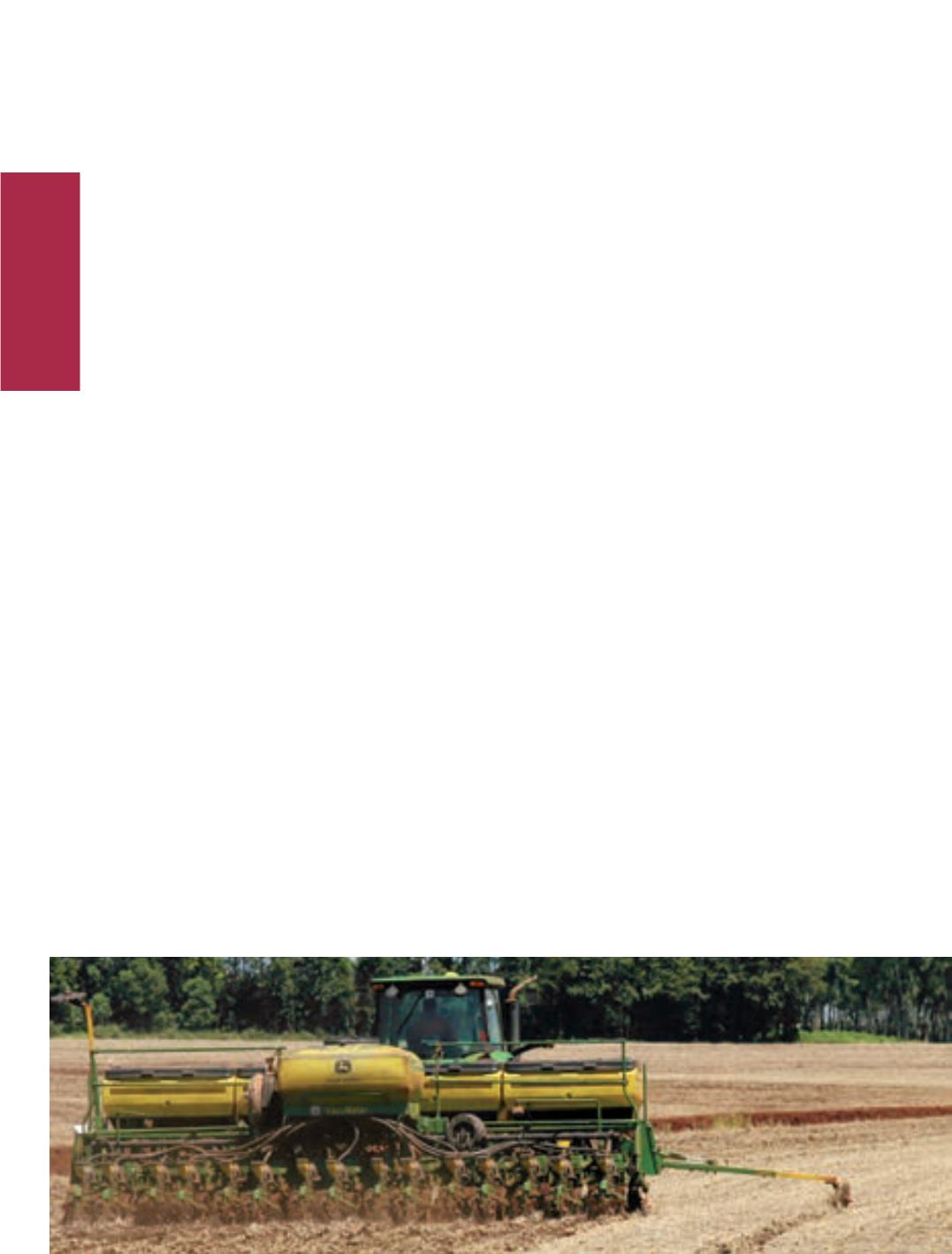

WERKTUIE/
IMPLEMENTS
The most common precision services that are currently on offer in South Africa are chemical precision and
soil surveys, with remote sensing probably being the next generation. A number of aspects determine the
quality and value
of precision services.
Chemical precision
Chemical precision services involve soil samples being drawn in a grid pattern and analysed and
chemical maps then being produced. The aim is the differential correction of deficiencies and
imbalances.
Grid pattern
In the process of sampling soil for chemical precision in dryland or irrigation crop cultivation, points
in a grid pattern are distributed across the field with the aid of a GPS. This is usually done in a grid of
1 ha (100 m intervals) or 2 ha (144 m intervals). The 1 ha grid is usually used in irrigation fields and
areas with significant soil differences within a relatively short distance of less than 200 m. This applies
especially in undulating landscapes. In regions where the soil is more homogeneous, like in many of
the flat landscapes covered with wind-blown sand, the 2 ha grid pattern is more common. Sometimes
an even wider grid pattern, including a 3 ha (173 m intervals) and a 4 ha grid (200 m intervals), is
used. However, when the grid pattern is wider than 2 ha, the interpolated distribution of the chemical
characteristics becomes increasingly unreliable.
Sampling
Chemical soil properties change three-dimensionally (horizontally and vertically) and can vary a lot
within 1 m and also geographically across a field. Sampling should attempt to capture the variation in
the position of sampling adequately by sampling the nutritional zone of the plant as well as possible. The
principle is that the analysis is just as good as the sample that was drawn. A poorly representative sample
will lead to a poorly representative analysis and chemical recommendation map.
The sampling method should be defined in the report so that the user of the report can interpret it
correctly. A relatively large composite sample of about 5 kg should be taken initially. If the soil sample
includes the fertilisation zone of the crop, the fertilisation band should be included in proportion to the
rest of the nutritional zone. This is usually done with a soil auger with a diameter of 75 mm to 100 mm
by taking five to seven subsamples and mixing them thoroughly in a clean container (an old fertiliser bag
or pool chlorine bucket does not work). The final point sample should then be constituted from a number
of small subsamples from the mixed sample in the container. Each point sample is analysed separately
and fully.
It is a good practice to take subterranean samples (deeper than 400 mm) to identify subterranean
acidification should it occur. A composite subterranean sample of the field is often taken, but sometimes
individual samples are taken at some of the sampling points too.
Continued on p. 41
BE ON THE LOOKOUT FOR
QUALITY
PRECISION SERVICES

















